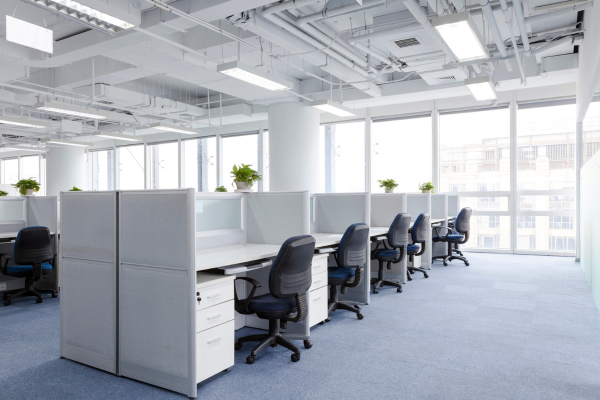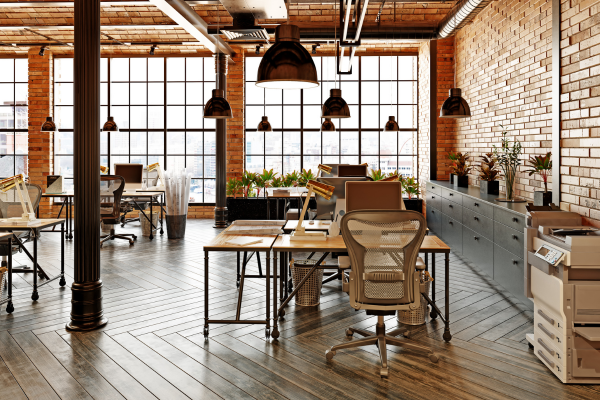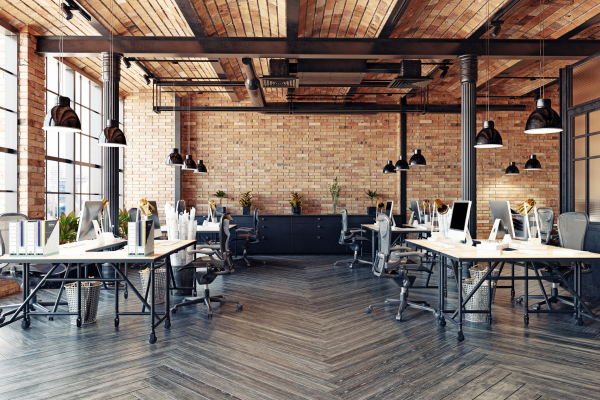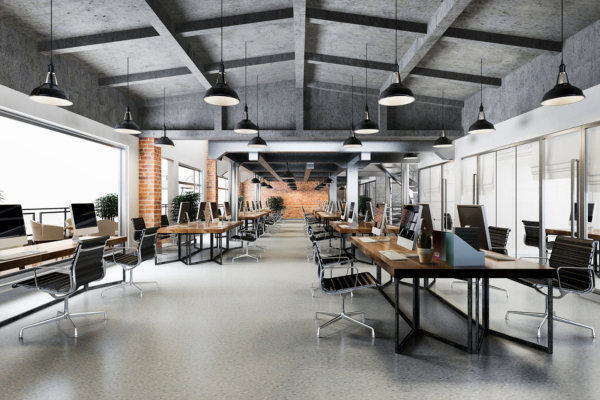“Good buildings come from good people and all problems are solved by good design.”
-Stephen Gariner
Employee fitness and well-being are a top priority of many organisations today, as they are constantly working faster and with increasing demands. The design and layout of office space design are pivotal in promoting wellness at work. Stress-reducing office spaces can boost productivity, enhance job satisfaction, and contribute to overall employee health.
This blog will look at different design strategies and elements that could help create a more pleasant work environment for all.
- Natural Light & Biophilic Design
- Statement Artworks
- Reflective Spaces
- Flexibility & Personalisation
- Relaxation Areas
- Thoughtful Colour Selection
- Proper Acoustics
1. Natural Light & Biophilic Design
One of the organizations in creating a quiet environment is nature’s light. It has been demonstrated to enhance mood, decrease stress and improve brain functioning. Set your workspace in a room where the light is sufficient. Artificial lighting can have the same effect if you have insufficient access to enough light. Light that produces a warm, diffuse glow doesn’t use harsh overhead lighting.
Sustainable Office Space is a practice whereby natural elements are added to the interior space. Plants, water features and raw materials such as wood or stone can be used for this purpose. In the workspace, plants are one of the great ways to add life and freshness.
They’re also able to improve air quality and reduce noise levels. Select plants with minimal maintenance that are easy to handle, such as Succulent or Cactus. It may also be possible to create a peaceful and calming atmosphere using water features. A small fountain or basin waterfall can be an excellent addition to the workspace.
In a workspace, warmth and texture can be achieved by natural materials such as wood or stone. They’re available in a wide range of uses, such as floors, walls, furniture and accessories.
2. Statement Artworks
It is possible to make a game change by choosing the right statement mirror for your space. Light, depth, and personality can be added to any room with a well-placed mirror. It can be used for decoration purposes, such as the creation of focus points or to highlight particular features of your furnishings.
The mirror’s size and shape should align with the room where it is to be placed. A large mirror in a small room can overwhelm the space, while a smaller one in a big room may look out of place. Also, take a look at the mirror’s shape.
Round mirrors can change the angle of view in a square room, while rectangular mirrors can lengthen narrow spaces. In various styles, from modern and minimalist to traditional and ornate, statement mirrors are available. Select a mirror that reflects the rest of your room’s style.
In a contemporary living room, for example, the modern mirror with clean lines would look perfect and traditional mirrors with their carved-out frames are excellent options in more classic areas. It’s essential to place your statement mirror where you want it.
You want to choose a spot where it will be prominent and will make a statement. Consider putting the mirror on your fireplace, couch or dining table. Creating a gallery wall or adding interest to an empty wall can also be accomplished by using the mirror.
3. Reflective Artworks
In recent years, open office spaces have become increasingly popular, and they may also be a source of stress to the staff due to noise and distractions. In particular, for workers who need to be focused on a difficult task or who are prone to distraction, this applies. The provision of employees access to silent rooms and conference rooms is one way in which the negative impact of opening offices may be mitigated. These spaces shall allow employees to relax and destress to concentrate on their work.
Choose a location where there is no activity in the core areas of your office. It could be the corner office, conference room or even a tiny corridor. Ensure this space has adequate seating, such as armchairs, sofas and beanbags. Ensure that employees are allowed to create the desired atmosphere using an adaptable lighting system. Install elements to the room that cancel noise, like rugs, curtains and plants. Do not forget to add white noise machines or noise cancellation headphones in this room.
Employers may also take other measures to reduce noise and distraction within the office, such as providing employees with a place to relax and concentrate. Actions to help minimize distraction include, for instance, installing audio-absorbing materials on walls and ceilings, using partitions to create smaller, more narrow spaces, limiting staff size at a single time, and assisting in reducing distractions.
4. Flexibility & Personalisation
A sense of ownership and well-being may be enhanced by allowing employees to customize their workspace. It can improve employment satisfaction by enabling them to set up their desk as they wish or add personal touches. In addition, the flexibility to use workspace areas such as hot desks or collaboration rooms is also capable of adapting to minimize the workforce’s different needs. It also allows employees to meditate or relax at their desks and in the office.
Google’s got meditation rooms all over the place. These rooms have comfortable seating, pillows, blankets and meditation cushions. At all times during the working day, employees shall be allowed to take advantage of meditation rooms. In the customizer of LinkedIn, a “quiet room” is reserved for its employees to retreat from workplace noise and distractions. There are comfortable chairs, books and games in the quiet room.
5. Relaxation Areas
It can be a game changer to reduce stress if you combine specific areas of meditation and relaxation in the office. There are several benefits for both physical and mental health, including reduced stress, increased mood or improved productivity, which can be seen in meditation and relaxation.
Creating a specific meditation or relaxation room is an option for incorporating meditation and relaxation into the working environment. It may be a small but peaceful area with customized furniture using seating, pillows and blankets. Products such as yoga mats, meditation cushions, and essential oil diffusers could also be included. Providing staff access to meditation apps or calming music may be another option.
6. Thoughtful Colour Selection
Colour psychology studies how colours affect people’s behaviour and emotions. It stems from the idea that some colours can elicit a particular emotional response. For example, blue colour is often associated with feelings of calmness and peace; red colours are frequently linked to the feeling of excitement and energy. By selecting colours that are well-being,
Color Psychology can help you create a comfortable environment in your workspace. It is essential to consider the overall beauty of the space when selecting colours for a comfortable working environment. The colours should complement one another, creating a harmonious way of looking. Another essential thing to keep in mind is that we should not use a large number of vibrant or contrasting colours because this can induce overstimulation.
Choosing colours that are known to enhance relaxation and good health can be a way of making your work environment calmer by using colour psychology. Blue, because of its affinity with the sky and ocean, can bring a sense of calm and peace. To improve concentration and focus, blue can also help. The green is a sign of nature’s growth, which can give rise to feelings of freshness and renewal. In addition, the green colour helps to reduce stress and anxiety.
7. Proper Acoustics
In an office environment, noise pollution can be a significant source of stress. Investing in adequate acoustics through sound absorption materials and strategic layout plans will mitigate this. To reduce the impact of noise and contribute to a quieter, more concentrated atmosphere, acoustic panels, rugs, or curtains can be used.
Creating stress-relief office spaces is not merely a trend but an essential factor for promoting employee well-being. The workspace should be well designed, allowing for reduced stress, increased employment satisfaction and higher productivity. The wellness of the workforce can be significantly enhanced by incorporating natural materials, ergonomic furniture, quiet spaces, personalized space options, mindfulness areas, creative colour choices, good sound and interaction between employees.
It is essential to take all these factors into account when developing a comfortable working environment. You can set up a space conducive to productivity, well-being and creativity by following these strategies. A messy workspace can cause distractions and stress. A well-designed elegant office cabin design can be a game-changer, enhancing work efficiency and leaving a lasting impression on clients and colleagues. With our focus on elegant office cabin design, we can help you transform your workspace into an inspiring haven of productivity.
In conclusion, implementing these seven design strategies can foster a serene and productive workplace. Prioritising natural elements, ergonomic furniture, and personalised spaces contributes to a tranquil atmosphere that minimises stress and promotes well-being. Embracing these principles is a critical step in creating a calm and harmonious work environment for employees and employers, with the expert touch of Oraanj Interior Design.
Author: Yogita Sawarthia & Tejaswini Patil (Interior Designer)




